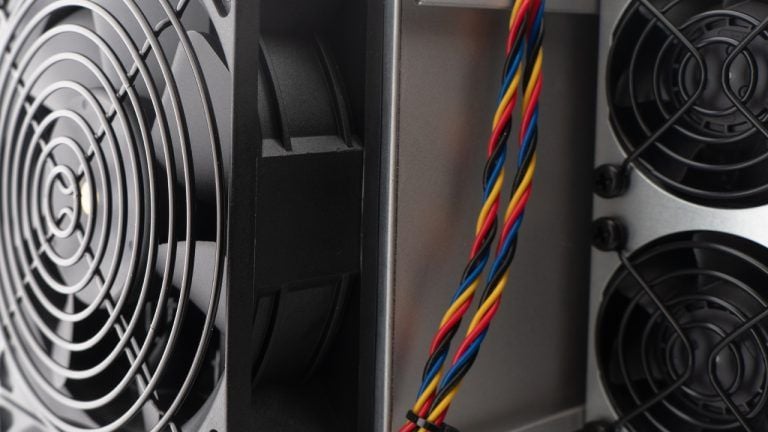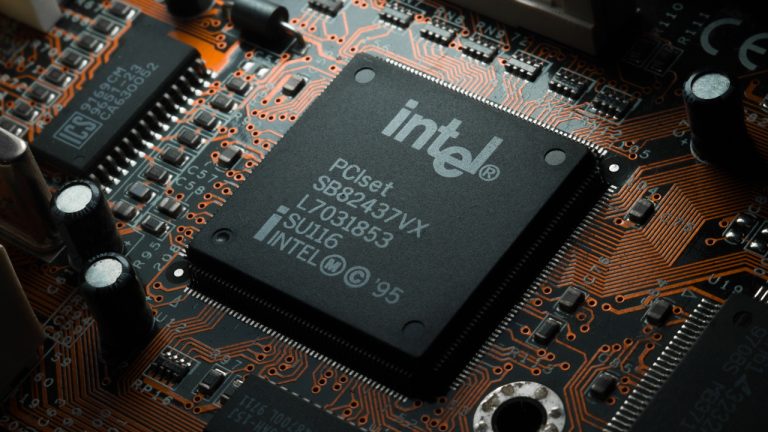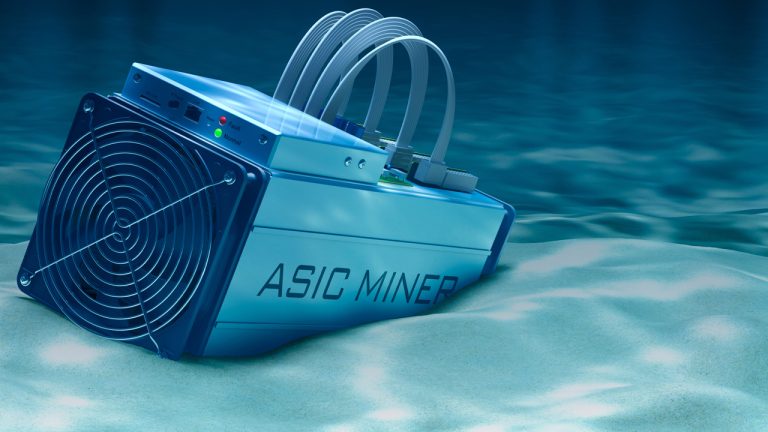 Bitcoin miner Argo Blockchain has announced a private placement of its ordinary shares and accompanying warrants to an institutional investor. The transaction is expected to generate gross proceeds of approximately £6.5 million ($8.3 million). Argo Blockchain Announces $8.3 Million Private Placement According to the announcement, the bitcoin miner Argo Blockchain (Nasdaq: ARBK) will issue 57.8 […]
Bitcoin miner Argo Blockchain has announced a private placement of its ordinary shares and accompanying warrants to an institutional investor. The transaction is expected to generate gross proceeds of approximately £6.5 million ($8.3 million). Argo Blockchain Announces $8.3 Million Private Placement According to the announcement, the bitcoin miner Argo Blockchain (Nasdaq: ARBK) will issue 57.8 […]
Cryptocurrency mining firm Argo Blockchain has reduced its debts to $75 million through the first half of 2023.
The Argo Blockchain mining company, which has been one of a number of firms to struggle amid negative market conditions and a highly competitive mining ecosystem, reported half year net losses of $18.8 million in 2023, down over 50% from a net loss of $39.6 million in H1 2022.
Argo also notes that it has reduced its debt by $4 million in 2023, taking its total debt to $75 million. The company has cut its debt by $68 million, having owed $143 million in June 2022.

Revenues were down by 31% in comparison to H1 2022, with Argo netting $24 million midway through 2023, which it linked to a decrease in the value of Bitcoin (BTC) and an increase global hash rate and the associated network difficulty.
Argo reports that it mined a total of 947 BTC through the first half of the year, an increase of just 1% of the BTC mined during the same period in 2022. It is worth noting that 2023 has seen a 78% increase in global hash rate.
As of June 2023, Argo’s balance sheets reflect $9.1 million of cash holdings and 46 BTC. Argo began the second half of the year by raising $7.5 million in gross proceeds through a share placement in July 2022 offered to institutional and retail investors.
Related: Argo Blockchain reports insufficient funds, ‘no assurance’ it can avoid Chapter 11 bankruptcy
While the company had warned that it faced the reality of bankruptcy in late 2022, its 2023 interim half year results indicate that it plans to increase its total hash rate capacity to 2.8 exahases per second (EH/s) by deploying some 1,628 BlockMiners to its Quebec-based mining facilities.
Argo also reported that it was in advanced discussions to sell “certain non-core assets” and was exploring other options to reduce its overall debt.
Argo board chairman Matthew Shaw highlighted a “transformational series of transactions” with Galaxy Digital in which it sold its Helios mining facility and property for $65 million in December 2022. Argo then refinanced a new $35-million, three-year asset backed loan with Galaxy.
“The transactions reduced total indebtedness by $41 million and allowed Argo to simplify its operating structure.”
Shaw added that Argo’s ability to maintain a fleet of more than 27,000 miners was crucial to its ongoing operations, with some 23,600 Bitmain S19J Pro operating at the Helios site through an ongoing hosting agreement with Galaxy.
Argo had previously warned that it was facing dire financial circumstances in late 2022 before it struck a deal with Galaxy for its Helios facility. In the months following the closure of the deal, former Argo CEO Peter Wall announced his resignation from the company.
Magazine: Recursive inscriptions: Bitcoin ‘supercomputer’ and BTC DeFi coming soon
 After announcing the production of bitcoin application-specific integrated circuits (ASICs), Intel, the world’s largest semiconductor chip manufacturer by revenue, appears to be abandoning its blockchain chip production. On Tuesday, a spokesperson for the chip manufacturer explained that Intel has “end-of-lifed the Intel Blockscale 1000 Series ASIC.” Intel Spokesperson Discloses Company Has End-of-Lifed the Blockscale 1000 […]
After announcing the production of bitcoin application-specific integrated circuits (ASICs), Intel, the world’s largest semiconductor chip manufacturer by revenue, appears to be abandoning its blockchain chip production. On Tuesday, a spokesperson for the chip manufacturer explained that Intel has “end-of-lifed the Intel Blockscale 1000 Series ASIC.” Intel Spokesperson Discloses Company Has End-of-Lifed the Blockscale 1000 […]
Crypto investment firm Galaxy Digital is acquiring the main facility of Bitcoin (BTC) miner Argo Blockchain for $65 million. According to Argo, billionaire Mike Novogratz’s crypto investment firm is buying the mining facility known as Helios in Dickens Country, Texas, as well as providing the struggling company with a $35 million loan. Argo was thrown […]
The post Billionaire Mike Novogratz’s Galaxy Digital To Acquire Struggling Argo Blockchain’s Main Facility appeared first on The Daily Hodl.

Publicly listed Bitcoin miners sold off nearly everything they mined in 2022 but appear to have started accumulating reserves once again.
Publicly listed Bitcoin (BTC) miners sold off almost all of the Bitcoin they mined throughout 2022, leading to a debate over whether the sales created "a persistent headwind" for the Bitcoin price or not.
Analyst Tom Dunleavy from blockchain research firm Messari shared the data in a Dec. 26 tweet, indicating that approximately 40,300 of the 40,700 BTC mined by Core Scientific, Riot, Bitfarms, Cleans Park, Marathon, Hut8, HIVE, Iris Energy, Argo and Bit Digital from Jan. 1 to Nov. 30 was sold off.
BTC miners sell roughly 100% of the coins they mine
— Tom Dunleavy (@dunleavy89) December 26, 2022
The 10 public bitcoin miners
detailed here mined ~40.7k BTC and sold ~40.3k in 2022
This is a persistent headwind for BTC and for no other reason a good thesis to be bullish the ETHBTC ratio trade pic.twitter.com/L1iI6Z07p7
The reserves held by mining firms have decreased considerably during the latter half of 2022, particularly throughout November, as the crypto industry reeled from the effects of the FTX fallout.

Dunleavy believes that miners consistently selling off newly produced Bitcoin places downward pressure on the price of the leading cryptocurrency.
However, some industry commentators such as BitMEX’s former CEO, Arthur Hayes, believe the selling pressure created by the increased sales of Bitcoin miners is negligible.
He opined in a Dec. 9 blog post that “even if miners sold all the Bitcoin they produced each day, it would barely impact the markets at all.”
According to Bitcoin Visuals, on Dec. 26 the daily trading volume for Bitcoin was $12.2 billion. The outflow from miners on the same day, according to CryptoQuant, was 919 BTC ($15.35 million), which represents just 0.13% of the total volume traded.
Miner's reserves have rebounded slightly during December, increasing by nearly 1%. The figure contributes to the view shared in a Dec. 27 post by crypto analyst IT Tech that the situation for miners appears to be stabilizing.
#Bitcoin miners - update. Is there anything to worry about?
— IT Tech (@IT_Tech_PL) December 27, 2022
1.
Miner Outflow
Miner Inflow
Miner Reserve
White line on the bottom - miner to Exchange flow
2. Mining difficulty
3. Miner selling power
4. Hashrate 7D MA
Full analysishttps://t.co/E3o0cgaNxu
Related: BTC price dips 1% on Wall Street open as Bitcoin miners worry analysts
Miners have faced significant headwinds throughout the year, with high electricity prices, falling crypto market prices and a higher mining difficulty eating into their bottom line.
With the cost of production for miners increasing while the Bitcoin price has been decreasing, miners such as Core Scientific have been forced to sell some of their reserves at a loss to fund their ongoing operations and efforts to expand.
 Bitcoin miner Argo Blockchain announced that it requested the suspension of trading its company shares on Dec. 27, as the company expects to make an announcement on Wednesday, Dec. 28, 2022. The company’s stock has lost 96.34% year-to-date and on Dec. 12, the bitcoin miner “advanced negotiations with a third party to sell certain assets” […]
Bitcoin miner Argo Blockchain announced that it requested the suspension of trading its company shares on Dec. 27, as the company expects to make an announcement on Wednesday, Dec. 28, 2022. The company’s stock has lost 96.34% year-to-date and on Dec. 12, the bitcoin miner “advanced negotiations with a third party to sell certain assets” […]
The Bitcoin network hashrate has returned to 241.29 EH/s after a temporary 38% fall to 170.60 EH/s from a weekly peak of 276.40 EH/s.
Bitcoin’s network hashrate has returned to regular levels again, days after freezing temperatures across the United States put a strain on the nation's electricity grid — leading to a temporary drop in hashrate.
In the days leading up to Christmas, bone-chilling temperatures swept across the United States, leading to millions without power and claiming at least 28 lives.
According to reports, Bitcoin miners in Texas, which accounts for a significant portion of the country's hashrate, voluntarily curtailed operations to give power back to the grid — so that residents can keep their homes heated.
The disruptions appear to have put a dent in Bitcoin’s hashrate, which typically hovers around 225-300 Exahashes per second (EH/s). This fell to 170.60 EH/s on Dec. 25.
As of Dec. 26 however, the hashrate has returned to 241.29 EH/s, according to data from hashrate mining calculator CoinWarz.
Bitcoin’s hashrate is calculated by measuring the number of hashes produced by Bitcoin miners trying to solve the next block. It is regarded as a key metric in assessing how secure the Bitcoin network is.
The recent events prompted a controversial statement from FutureBit founder John Stefanop, who suggested the fall in hashrate was due to a number of “highly centralized mines” in Texas turning off at the same time.
“I know, does not change the fact that a few large mines in Texas affect the entire network to the tune of 33%...everyones transactions are now being confirmed 30% slower because the hashrate is not decentralized enough,” he said.
“If hashrate was distributed evenly around the world by 10’s of millions of small miners instead of a few dozen massive mines, this event would not have even registered on the network,” Stefanop added.
Bitcoin bull Dan Held however refuted Stefanop’s take on the events, arguing that weather patterns do not mean centralized ownership or control.
According to the Cambridge Bitcoin Electricity Consumption Index, the United States accounts for 37.84% of the average monthly hashrate share. The top four states in the country for Bitcoin mining include New York, Kentucky, Georgia and Texas — all of which had experienced power outages due to the winter storm.
However, Dennis Porter, the CEO of Bitcoin mining advocacy group Satoshi Action Fund noted to his 127,400 Twitter followers on Dec. 25 that while the inclement weather, particularly in Texas, caused 30% of Bitcoin’s hashrate in the United States to go offline, the network “continues to work perfectly.”
Over 30% of the #Bitcoin hashrate has gone offline due to extreme weather in Texas and yet the global #Bitcoin network continues to work perfectly.
— Dennis Porter (@Dennis_Porter_) December 25, 2022
Now imagine if Amazon or Google tried turning off 1/3rd of their data centers. pic.twitter.com/G49iqBZXDL
Cheap power and favorable mining regulation in Texas has led to a Bitcoin mining boom in Texas in recent months, which is now host to some of the largest mining companies in the world.
Among those Riot Blockchain, Argo, Bitdeer, Argo, Compute North, Genesis Digital Assets and Core Scientific — who’ve recently received a $37.4 million bankruptcy loan to stay afloat.
Related: 'There's a lot less land to go around' — Why White Rock established off-the-grid mining in Texas
However recent weather events have only added to Bitcoin mining companies’ list of headaches.
The bear market has plagued Bitcoin mining companies to the tune of $4 billion in debt, according to recent data.
Many notable U.S. based mining companies have filed for bankruptcy in recent months too, while many other companies are approaching near-insurmountable debt-to-equity ratios that require immediate restructuring.
The tragic weather events haven’t impacted the price of Bitcoin (BTC) thus far, which is currently priced at $16,826 — only down 0.27 over the last 24 hours.
 On Dec. 21, 2022, one of the largest bitcoin mining operations in the industry, Core Scientific, filed for Chapter 11 bankruptcy protection in the Southern District of Texas. According to the filing, Core Scientific has roughly 1,000 to 5,000 creditors and its estimated assets are worth between $1-10 billion. Core Scientific Voluntarily Files for Chapter […]
On Dec. 21, 2022, one of the largest bitcoin mining operations in the industry, Core Scientific, filed for Chapter 11 bankruptcy protection in the Southern District of Texas. According to the filing, Core Scientific has roughly 1,000 to 5,000 creditors and its estimated assets are worth between $1-10 billion. Core Scientific Voluntarily Files for Chapter […]
The Bitcoin miner warned its cash reserves may be depleted by the end of 2022 or sooner as it cuts back on spending, including not making loan repayments.
Bitcoin (BTC) miner Core Scientific has warned of “substantial doubt” they will be able to continue operations over the next 12 months given financial uncertainty.
In its quarterly report filed with the United States Securities and Exchange Commission (SEC) on Nov. 22, the firm indicated it had accrued a net loss of $434.8 million over the third quarter of 2022.
After net losses of $862 million in the second quarter, its total net losses for 2022 are sitting at $1.71 billion.
The company suggested in order to continue its operations through to November 2023, it will require additional liquidity, adding that it anticipates its cash resources "will be depleted by the of 2022 or sooner."
"Given the uncertainty regarding the Company’s financial condition, substantial doubt exists about the Company’s ability to continue as a going concern through November 2023.
It said it also had doubts about its ability to raise funds through financing or capital markets citing "uncertainties and current market conditions" which have reduced the availability of those types of liquidity sources.
Rising energy costs, the falling price of Bitcoin, and an increased hash rate were also cited as reasons for why it's suffering a liquidity squeeze, adding that further "substantial doubt exists" with its ability to continue operating as its "very difficult to predict when or if Bitcoin prices will recover or energy costs will abate."
Core Scientific had previously indicated in an Oct. 26 SEC filing that a low Bitcoin price, the rising cost of electricity, and a refusal from bankrupt crypto lender Celsius to repay a $2.1 million loan could result in its cash resources being “depleted by the end of 2022 or sooner.”
Core Scientific has taken steps to ease the financial stress it is under, including decreasing operating costs, reducing or delaying capital expenditures, and increasing hosting revenues.
It has also decided not to make payments to some of the firms it has borrowed from and warns that it may be sued for nonpayment and face increases in interest rates as a result.
Related: Turbulence for blockchain industry despite strong Bitcoin fundamentals: Report
Core Scientific is not the only crypto mining firm struggling to continue operating in the current market, with Argo Blockchain seeking to raise additional liquidity via subscription for ordinary shares and warning that it is also at risk of ceasing operations if it fails to do so.
Australian mining firm, Iris Energy, is also showing signs of financial distress, revealing in a Nov. 21 filing to the SEC that it had unplugged hardware due to the units producing “insufficient cash flow.”
The founder of asset manager Capriole Investments, Charles Edwards, has been particularly bearish about the state of Bitcoin mining and noted in a Nov. 22 tweet that this type of response is to be expected when the price of Bitcoin is below the cost of mining.
Bitcoin miners are "unplugging their hardware" because "the units produce insufficient cashflow."
— Charles Edwards (@caprioleio) November 22, 2022
Iris Energy bankrupt.
This is what happens when we spend time below the Bitcoin Electrical Cost. It no longer makes sense for many to run their mining rigs. pic.twitter.com/kjrC6j3KVf
 On Oct. 31, 2022, the publicly-listed bitcoin miner Argo Blockchain revealed the firm’s attempt to obtain $27 million in a scheduled financing deal fell through. According to the company’s October update, Argo said it did not believe the deal “will be consummated” and now two market analysts have downgraded the company’s shares. Argo Blockchain’s $27 […]
On Oct. 31, 2022, the publicly-listed bitcoin miner Argo Blockchain revealed the firm’s attempt to obtain $27 million in a scheduled financing deal fell through. According to the company’s October update, Argo said it did not believe the deal “will be consummated” and now two market analysts have downgraded the company’s shares. Argo Blockchain’s $27 […]